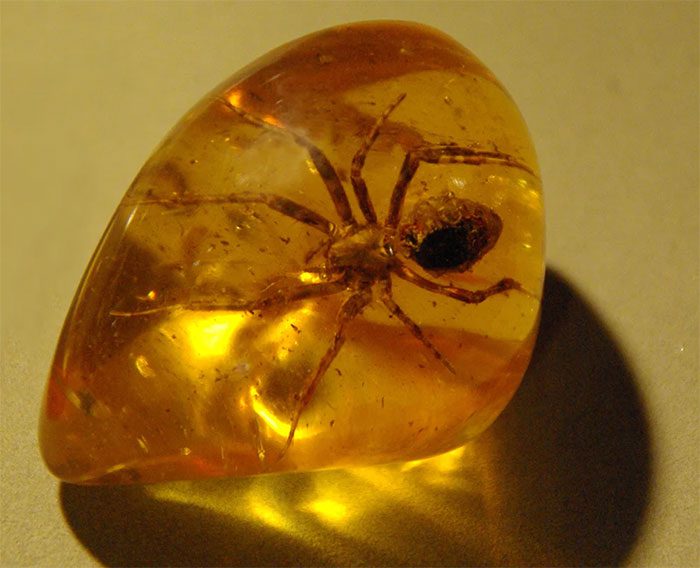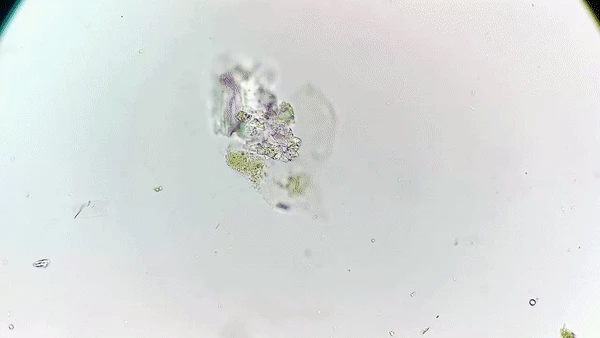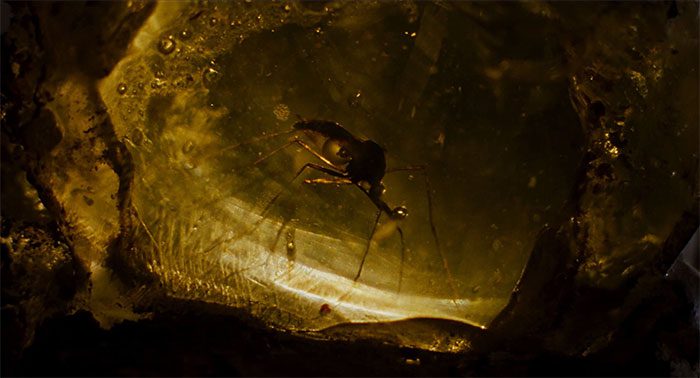What Secrets Does Dinosaur-Era Amber Hold from Ancient History?
The question of what life on Earth was like millions of years ago has long intrigued scientists seeking answers. Fossils are crucial pieces of evidence that help decode this historical mystery, and among them, amber fossils often yield surprising discoveries.
Amber is essentially fossilized tree resin that has undergone chemical and physical transformations over tens of thousands to millions of years. While amber can be found in various parts of the world, for it to become fossilized, it must be isolated from factors that could lead to its decomposition, such as oxygen or microorganisms. One of the most well-known sources of amber worldwide is the Baltic Sea in Northern Europe.

A specimen of amber containing a spider. (Photo: Wikimedia).
Amber originates from tree resin, a viscous, reddish liquid that flows from trees that are diseased or damaged. Not all trees produce resin that can become fossilized; only certain species in specific locations can yield resin that eventually turns into amber.
When a tree exudes resin, it flows downward due to gravity, and if an insect or anything else comes into contact with the resin as it flows down, it can become trapped. The resin then begins to polymerize and harden. It should be noted that the exact chemical transformations that turn resin into amber remain unclear. In some extremely rare cases, amber can contain water, which is typically referred to as Amber Enhydro.

Two amber samples in an experiment. The smaller sample is estimated to be around 22 million years old, while the larger one is approximately 99 million years old. Source: Walt (oneminmicro) / YouTube.
Over thousands and millions of years, the water—or anything that existed within that droplet—can be preserved, isolated from elements causing it to decompose, such as oxygen or microorganisms. One of the most fascinating experiments involved breaking open a million-year-old amber containing water and examining the droplet under a microscope by a YouTuber named Walt from Austria.
This experiment aimed to analyze water samples from two pieces of amber: one approximately 20 million years old and the other around 99 million years old. To extract the water from the amber, Walt used a drill to get as close as possible to the water chamber, then punctured it with a needle and used a tube to bring the water up for examination.

Microscopic particles found in the water of the 22 million-year-old amber. (Source: Walt (oneminmicro) / YouTube).
The 20 million-year-old amber was smaller, containing only one water chamber; while the 99 million-year-old amber had multiple chambers, with air bubbles still visible when the amber was shaken. Furthermore, the 99 million-year-old amber preserved many insect body fragments and even an intact insect. Given the significant water content, it can be surmised that this amber formed during a heavy rain or possibly a storm.
Under the microscope, the water sample from the 20 million-year-old amber contained many tiny objects, likely plant debris, and it is also possible that bacteria once existed, consuming parts of this plant material and generating biofilm. Aside from these objects, no life forms appeared to exist in the sample. In contrast, the 99 million-year-old amber’s water sample also contained small objects, seemingly more plant fragments.
A famous science fiction film titled Jurassic Park featured a substance related to amber: a mosquito carrying dinosaur blood preserved in 125-million-year-old amber. In the film, researchers extracted DNA from the dinosaur blood within the mosquito and “revived” the dinosaur. This has led many to wonder whether such a feat could indeed be achieved in reality.

DNA degrades quickly, making preservation in amber difficult.
Almost certainly, the answer is no! Insects trapped in amber appear very lifelike at first glance, as if breaking the amber would cause them to fly or run away immediately. However, this is due to the well-preserved exterior, while the inner core is not. DNA actually degrades very quickly.
Paleontologist David Peris stated in an interview with Syfy Wire that it is hard to believe that DNA could survive in tree resin for long, especially in a permeable substance like that. In reality, scientists are studying how long DNA can last in substances like tree resin. It is worth mentioning that the DNA that researchers have successfully collected (partially or completely) comes more often from permafrost samples than from organisms trapped in tree resin or amber.


















































